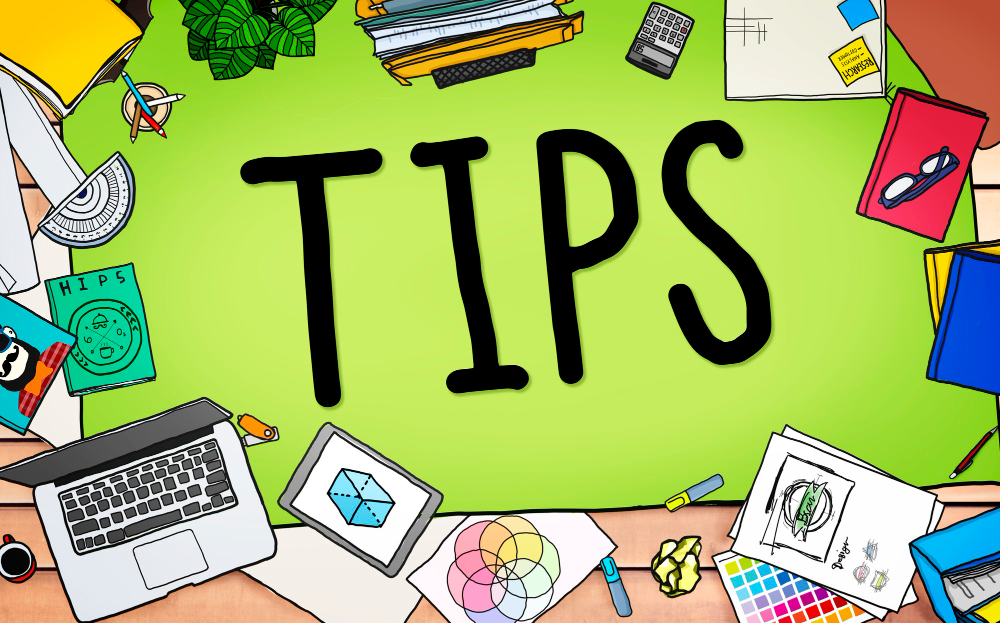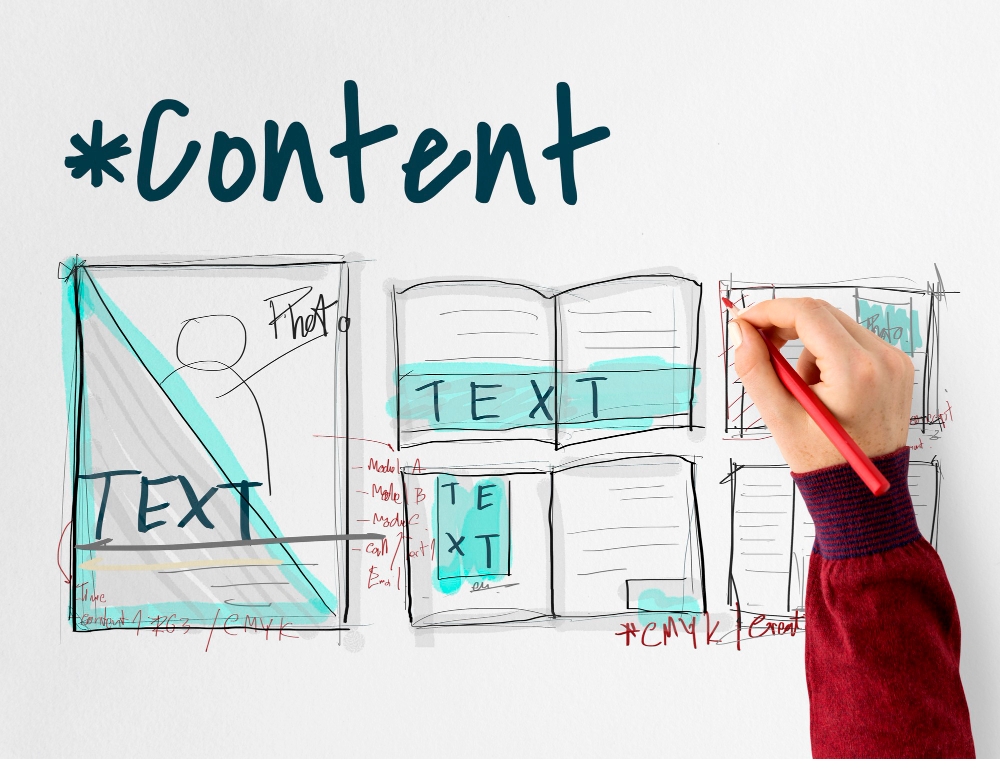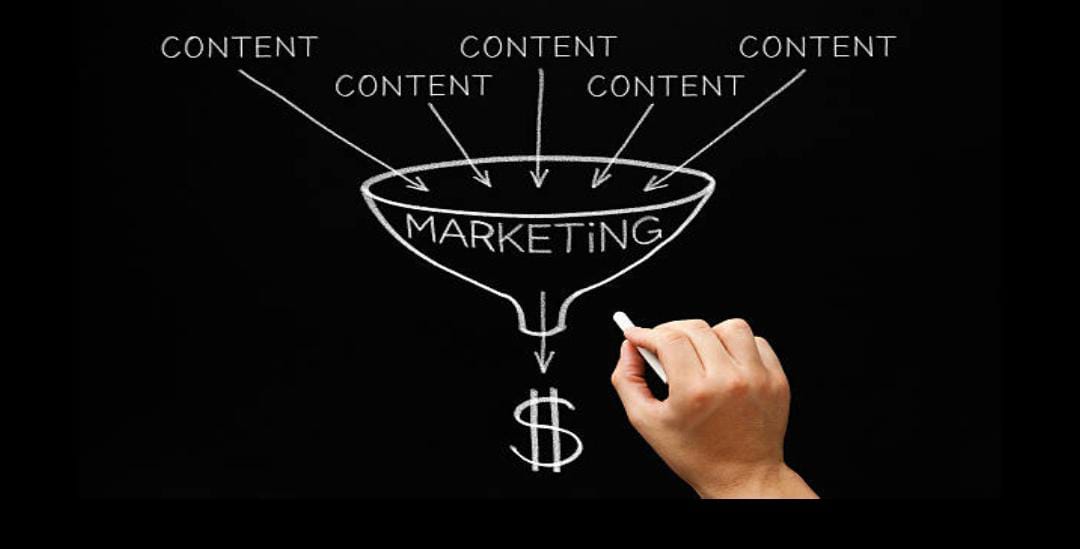
What is a Content Marketing Funnel and How Do You Build One?
Before anyone reaches out to your company, they would have researched your company first. You introduce your company to your customers through your content. It means that you have to put your best content forward at all times. You build a content marketing funnel primarily to attract, engage and convert customers. The Content Marketing Funnel is a type of sales funnel that gives your business a comprehensive and easy-to-follow framework for creating content. This in turn guides customers along their purchase journey before making a purchase decision.
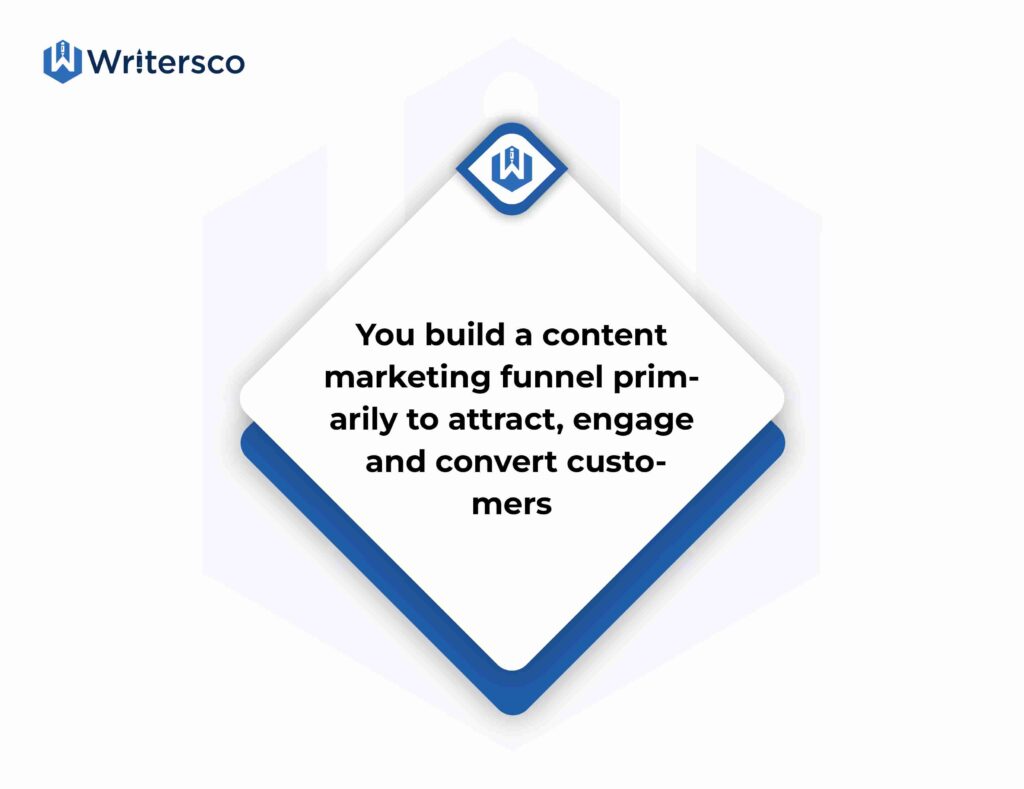
Content Marketing Funnel
A content marketing funnel illustrates a potential customer’s stages before purchasing or taking a desired action. The funnel is typically broken down into three: top of the content marketing funnel, middle of the funnel, and bottom of the funnel.
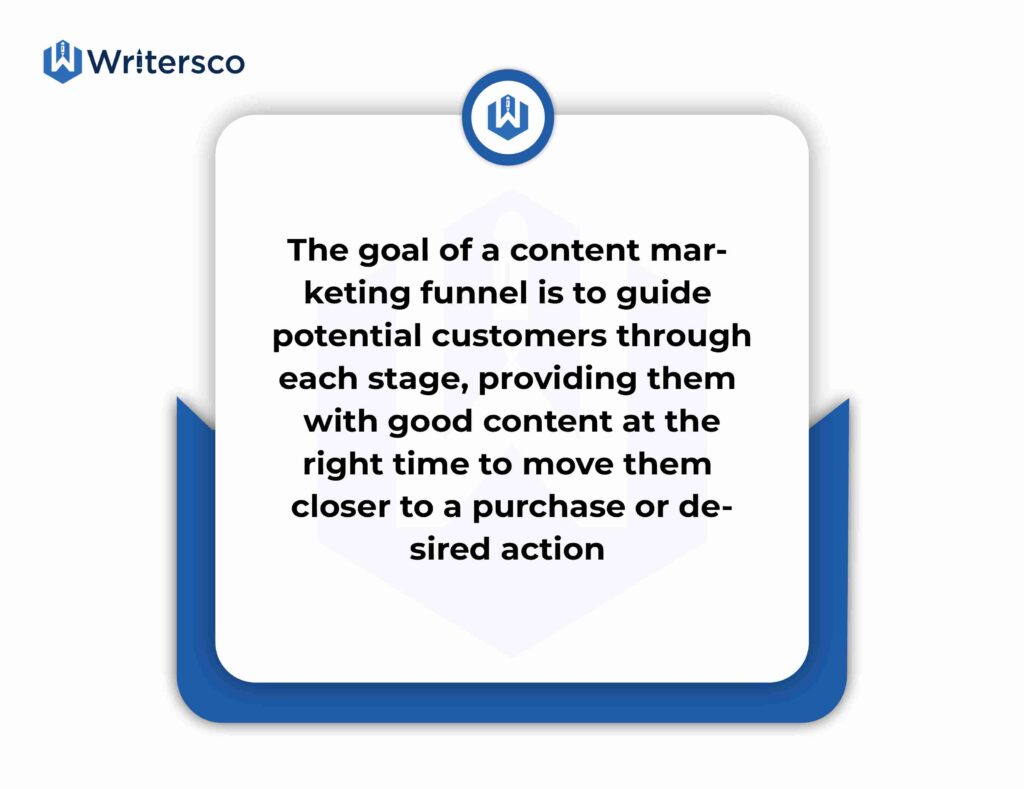
Stages of The Content Marketing Funnel
Top of the Funnel (TOFU)
The top-of-the-funnel (TOFU) is the first stage of the content marketing funnel. At this stage, potential customers are aware of a problem or need. They are, however, not aware of your brand or product. The top-of-the-funnel content aims to attract potential customers to your brand and educate them on the problem or need that your product or service can solve.
Top-of-the-funnel content typically includes:
- Blog posts and articles that provide valuable information and insights on topics related to your industry or niche.
- Social media updates and posts that provide useful tips, engaging content, and information that aligns with your brand values.
- Infographics and visual content simplify complex information and make it easy to understand and share.
- Videos and podcasts that entertain, educate, or inspire potential customers while introducing them to your brand and values.
Top-of-the-funnel content aims to build brand awareness, establish your brand in your industry, and attract potential customers to your website or social media channels. You can build trust and establish relationships with potential customers by providing valuable content that addresses their needs and interests, laying the foundation for future engagement and conversions.
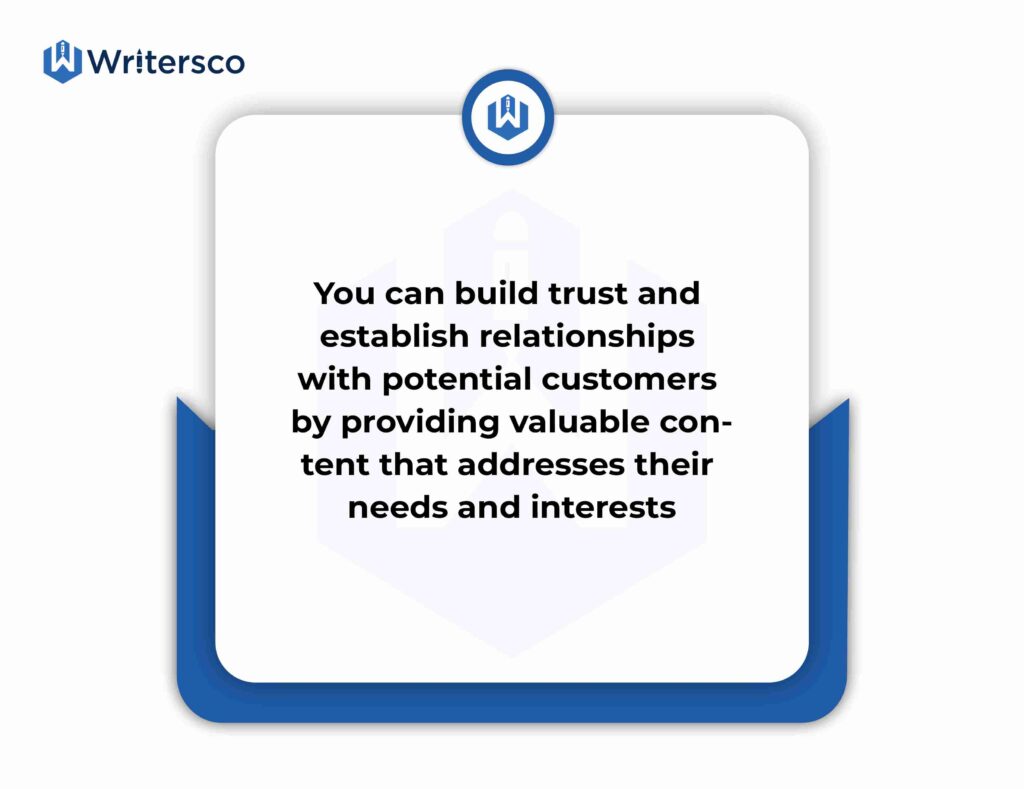
Middle of the Funnel (MOFU)
The middle of the content marketing funnel (MOFU) is the second stage of the content marketing funnel. At this stage, potential customers know your brand and consider your product or service. The middle-of-the-funnel content aims to educate potential customers further about your brand and product and demonstrate its value.
Middle of the funnel content typically includes:
- Educational guides and ebooks that provide in-depth information on your product or service and its benefits.
- Case studies that showcase how your product or service has helped other customers.
- Webinars that educate potential customers on industry trends, best practices, and solutions related to their needs.
- Email campaigns that offer exclusive content, special offers, or personalized recommendations based on the customer’s interests and behavior.
The middle-of-the-funnel content aims to build trust with potential customers by providing valuable information and demonstrating your expertise in your industry. By addressing their specific needs and pain points, you can move them closer to a decision to either purchase or engage with your brand.
Bottom of the Funnel (BOFU)
The bottom of the content marketing funnel is the stage where prospects have become leads and are close to purchasing. At this stage, the focus of the content is to persuade leads to take the next step and become customers.
Content at the bottom of the content marketing funnel should be highly targeted to the needs and interests of leads. It should also focus on the benefits and features of the product or service and how it can solve the leads’ specific problems or pain points.
The content in the BOFU should also include calls-to-action (CTAs) that encourage the leads to take action. These actions could be making a purchase, scheduling a consultation, or signing up for a free trial. The CTAs should be clear and concise, making it easy for the leads to take the desired action.
Content types that can be used in the BOFU include product demos, case studies, testimonials, free trials, and pricing information. The goal is to provide your leads with all the information they need to make an informed purchase decision and guide them toward becoming loyal customers.
The aim of a content marketing funnel is to guide potential customers through each stage, providing them with good content at the right time to move them closer to a purchase or desired action. By providing value and building trust with potential customers through content, businesses can increase their chances of converting them into loyal customers.
How to Build A Content Marketing Funnel
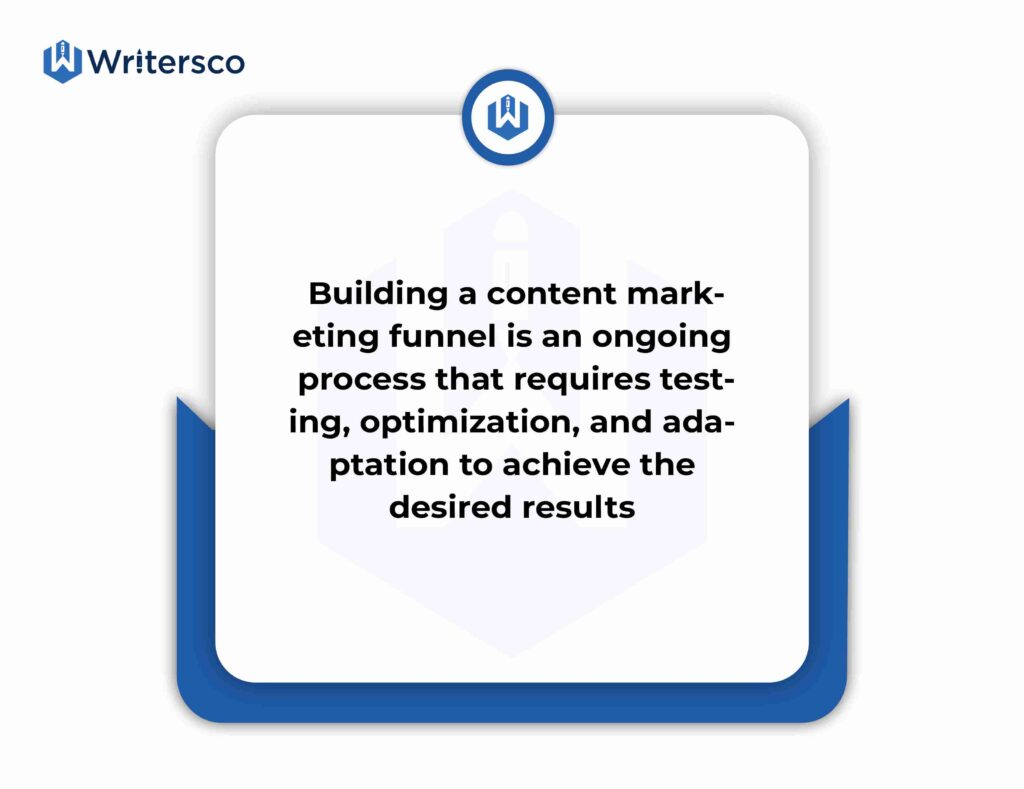
Building a content marketing funnel involves creating a strategic plan that outlines the stages of the funnel, the target audience, the content types, and the desired outcomes. Here are the steps to build a content marketing funnel:
#1. Define Your Target Audience
Identify your ideal customer and their pain points, needs, and interests. It will help you create content that resonates with your target audience. It’s important to note that your target audience may evolve as your business grows and the market changes. Therefore, it’s important to regularly revisit and refine your target audience to ensure that your content marketing strategy remains relevant and effective.
#2. Map Out the Stages of the Content Marketing Funnel
Mapping out the stages of the content marketing funnel involves identifying a potential customer’s stages, from being unaware of your brand to becoming a loyal customer. The funnel typically consists of three stages: top of the funnel (TOFU), middle of the funnel (MOFU), and bottom of the funnel (BOFU). Each requires different types of content and tactics to move the prospect closer to making a purchase.
#3. Create Content for Each Content Marketing Funnel Stage
Based on the stages of the funnel, create content that addresses the needs of your target audience at each stage. For TOFU, focus on creating educational and informative content such as blog posts, infographics, and social media posts. For MOFU, create content that builds trust and authority, such as webinars, case studies, and ebooks. Lastly, for BOFU, create content that persuades and leads to action, such as demos, free trials, and testimonials.
#4. Determine Distribution Channels
Decide the channels to distribute your content, such as social media, email, website, and advertising platforms. Determining distribution channels for your content involves understanding where your target audience spends time online and the types of content they prefer to consume. It’s important to remember that only some distribution channels will be effective for some businesses or target audiences. Therefore, it’s essential to continually test and optimize your distribution strategy to ensure that your content reaches the right people in the right places.
#5. Set Up Analytics
Setting up analytics is an important step in measuring the effectiveness of your content marketing strategy. Setting up analytics can be complex, but investing time and resources in tracking and analyzing your data is important to make informed decisions about your content marketing strategy. Use tools like Google Analytics and social media analytics to track the performance of your content at each stage of the funnel.
#6. Optimize Your Content
Optimizing content ensures that it is effective and performs well in reaching your target audience, engaging them, and driving desired actions. Optimize your content for readability by using short sentences and paragraphs, simple language, and active voice. It improves user engagement and encourages readers to stay on your site longer. Continuously optimize your content based on the performance metrics to improve conversion rates and drive more leads down the funnel.
#7. Nurture Your Leads
Once leads enter the funnel, use email marketing, retargeting ads, and other tactics to nurture and keep them engaged with your brand. Nurturing leads involves building relationships with potential customers over time, providing valuable information and resources, and guiding them through the buyer’s journey. Here are some steps to help you nurture them:
- Segment your leads based on their interests, attitude, and stage in the buyer’s journey. It will help you create targeted content and communication that resonates with them.
- Use email marketing: Use email marketing to send personalized and relevant content to your leads based on their interests and behavior. It includes welcome emails, educational content, and promotional offers.
- Engage on social media: Engage with your leads by sharing valuable content, answering questions, and responding to comments. It helps to build relationships and establish trust.
- Provide excellent customer service: Provide excellent customer service to your leads by promptly responding to inquiries and addressing their concerns. It helps to build trust and establish a positive reputation.
- Use lead scoring: Use lead scoring to prioritize and segment your leads based on their engagement and behavior. It helps you focus your resources on the most qualified leads.
- Measure and refine: Measure the effectiveness of your lead nurturing efforts and refine your strategy based on your insights. It includes tracking email open rates, click-through, and conversion rates.
Building a content marketing funnel is an ongoing process that requires testing, optimization, and adaptation to achieve the desired results.
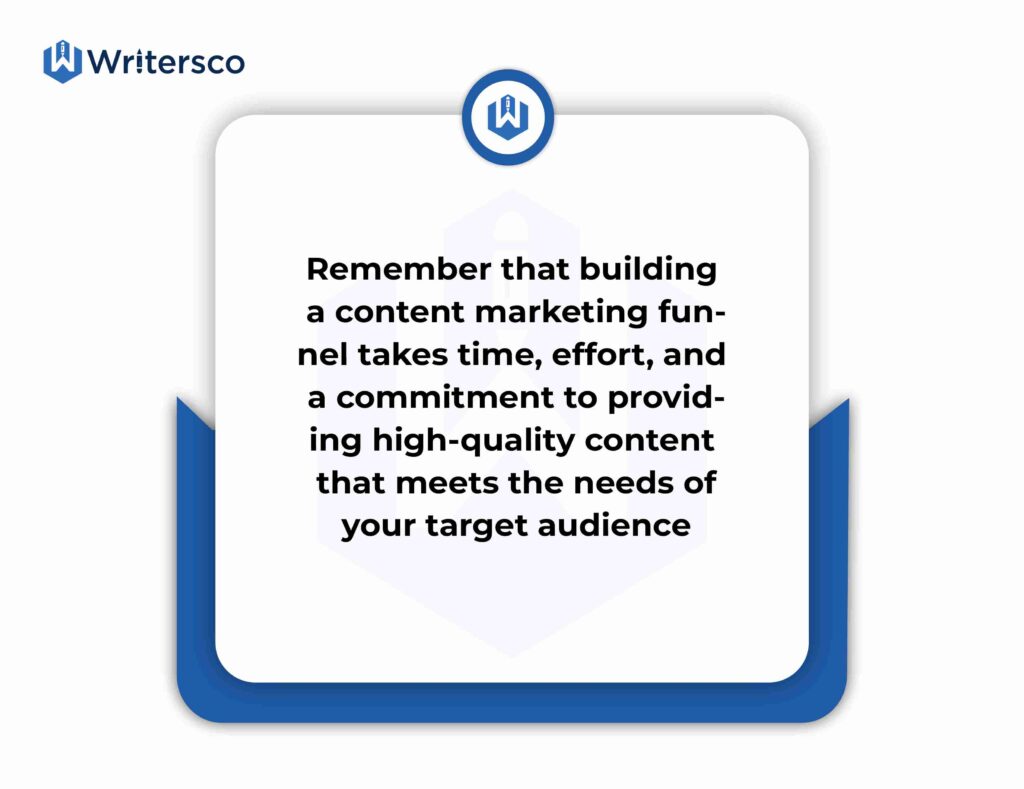
Conclusion
Building a content marketing funnel is essential in creating a successful content marketing strategy. By mapping out the stages of the funnel, defining your target audience, selecting appropriate distribution channels, creating optimized content, and analyzing your results, you can drive more traffic to your website, engage your target audience, and ultimately convert them into loyal customers. It’s important to constantly measure and refine your strategy based on your insights to ensure you provide the most value to your audience and achieve your business goals. Remember that building a content marketing funnel takes time, effort, and a commitment to providing high-quality content that meets the needs of your target audience.



